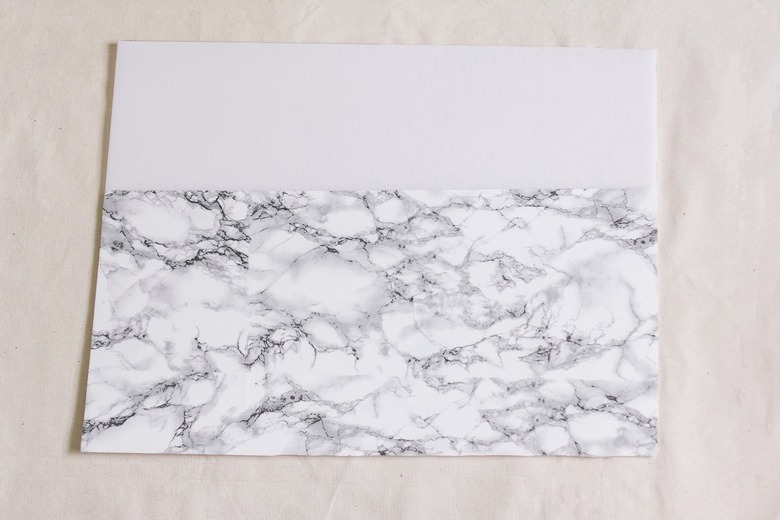How To Remove Contact Paper From Wood
We may receive a commission on purchases made from links.
Contact paper is a great way to add color and style to a space without painting or refinishing. It's also commonly used to line shelves and the inside of cabinets, brightening them up and making them look cleaner overall. Contact paper is decorative paper with an adhesive backing, which means you can easily install it without having to apply glue or some other sticky paste.
Whether you rent or own your home, contact paper is a game changer, allowing you to change up your home decor on a whim. But it's important to keep in mind that removing contact paper isn't as easy as applying it. If you do it incorrectly, it can leave behind sticky residue. And contact paper is water-resistant and durable, meaning it won't come off with wallpaper remover. Removing it from a wood surface is difficult and time-consuming, but it's not impossible. Here's the right way to remove contact paper from wood.
Things Needed
-
Hair dryer or heat gun
-
Cloth
-
Mild dish soap
-
Towel
How to Remove Contact Paper From Wood
1. Heat Up the Contact Paper
Apply heat to soften the adhesive on the contact paper. Set a hair dryer or heat gun to a medium setting, turn it on, and wave it a few inches above the contact paper for a few minutes, beginning at one corner of the contact paper and working diagonally. The longer you heat it, the looser the adhesive will be, and the easier it will be to remove the contact paper.
2. Begin Pulling Up the Contact Paper
With the hair dryer still on and in hand, gently pull the contact paper away from the wood while applying heat with the dryer. Continue applying the heat and pulling the contact paper until you have removed all the paper from the wood.
3. Remove Leftover Adhesive
Once you have removed all of the contact paper, look for any sticky residue that the contact paper may have left behind. Using a scraper or adhesive remover, scrub the wood until all of the residue is gone.
Tip
If you use a chemical adhesive remover, check the label for specific instructions. Not only will the label tell you how to use the product but it will also alert you to any safety issues of which to be aware while using it. You may need to don gloves or safety goggles.
4. Clean and Dry the Wood
Clean the wood with a cloth, dipping it in warm, soapy water as you go. A mild dish soap works well to clean wood without damaging it. After it's clean, wipe it dry with a towel. You'll be left with residue-free wood.
